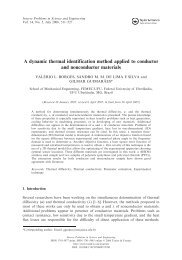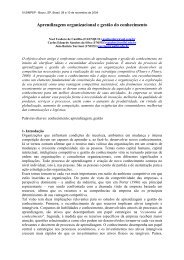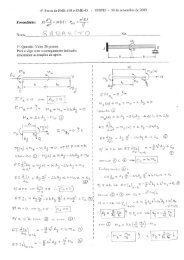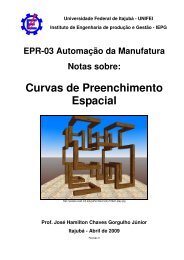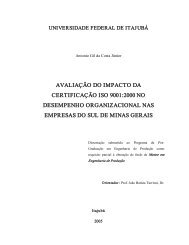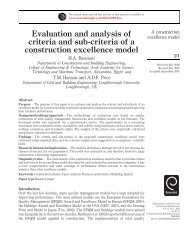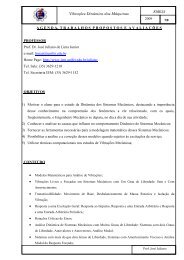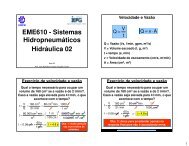Numerical simulation of two-dimensional flows over a circular ...
Numerical simulation of two-dimensional flows over a circular ...
Numerical simulation of two-dimensional flows over a circular ...
Create successful ePaper yourself
Turn your PDF publications into a flip-book with our unique Google optimized e-Paper software.
362 A.L.F. Lima E Silva et al. / Journal <strong>of</strong> Computational Physics 189 (2003) 351–370surface, the time step is <strong>of</strong> 1 10 3 . This time step is <strong>of</strong> the order <strong>of</strong> that used by others authors (i.e., Laiand Peskin [10]). The results obtained with this time step, for Re ¼ 80, compare very well with othersauthors results. Although, by security measure the authors have used a time step <strong>of</strong> Dt ¼ 1:10 4 for allcalculation presented in the present paper.For Reynolds number equal to 10, 20 and 40 the wake formed behind the cylinder attains a steadysymmetric state, which is in agreement with the well-established result, by the linear stability theory. Thecylinder wake instabilities rises for Re P 47.Fig. 9 shows the recirculation bubble behind the cylinder at Re ¼ 10, 20 and 40, respectively, in thesteady flow regime. The bubble increases with the Reynolds number.The force components ðF x ; F y Þ distributed near the solid interface are shown in Fig. 10. We observe that itis different from zero also inside the interface. In fact, we have a velocity field inside this interface but it doesFig. 9. Flow past a <strong>circular</strong> cylinder. Streamline visualization: (a) Re ¼ 10, (b) Re ¼ 20 and (c) Re ¼ 40.Fig. 10. Force field illustration for Re ¼ 40: (a) F x , (b) F y .



